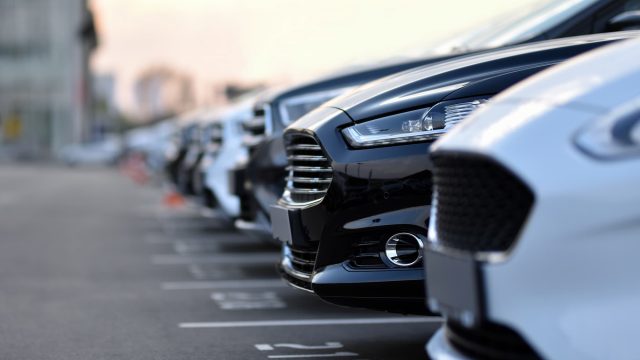It’s official, driverless cars are getting closer and closer to reality. Technology is speeding along and Google are in pole position to win the race with their Self-Driving Car. Whatever your view, driverless cars have divided opinion and led to overheated arguments, but what will they really bring to the road?
Pros and Cons
There are many pros and cons to driverless cars and most people are either for or against them. But what are the main points?
Pros
Perhaps the biggest pro is you don’t need a licence to “drive” a fully automated car (more on this later), this means kids can do the school run on their own and the elderly or those who are deemed unfit to drive can get back on the road.
Despite the potential increase in numbers of cars on the road, their “smart” technology should actually reduce congestion. They’ll be able to drive closer together and potentially move as “one” like a train.
Driverless cars will be safer as 90% of accidents are down to human error. Unlike us, driverless cars can’t drink and drive or race one another through town centres.
They should be more fuel efficient and cheaper to run, particularly Google’s modified Prius.
Cons
By allowing children and OAPs to drive, taxis and buses could become obsolete, whilst delivery drivers and lorries would become outdated too. This would lead to huge job losses which in some areas could be catastrophic.
They’ll take the fun out of driving, no more driving through the countryside in summer with the roof down and I doubt Ferrari are putting all their resources into producing a car where Sebastian Vettel is an optional extra.
They can ignore temporary traffic lights (see below) and speed signs which could potentially lead to an increase in collisions in areas with roadwork’s (so that’s the UK stuffed).
Whilst they’ll be cheap to run, prices could start from over £100,000 per vehicle.
What effect will they have on car hire?
This is it! The big question that is on everybody’s lips! Well in short it should make car hire cheaper, safer, easier, and more accessible.
OK, the initial cost of a driverless car is going to be high but once they’re mass produced and more common, prices will fall. Car hire firms are also likely to be given great deals in order to introduce the public to these new machines without having to shell out thousands.
Whilst you don’t need a licence to operate a fully automated car, you do need one for a highly automated vehicle as you may have to take control in some circumstances. This means anyone will be able to hire a fully automated car which will make it easier for the under 25’s and over 70’s to explore more whilst on holiday. Another time saving benefit in theory is that you wouldn’t have to wait in line to pick up your hire car. The supplier could send it to meet you at your pick up point meaning they could be based off site. With enough technology, the car could even pinpoint your location via your smartphone’s GPS location. This would also lead to cheaper prices as it removes the need for suppliers to rent expensive premises at airports or in city centres, as they could be stored off-site.
You won’t have to be insured as a driver on a fully automated car as you’re not driving it so that’ll bring prices down. You may have to buy insurance to cover your belongings but that’s about it.
You won’t have to worry about driving on the wrong side of the road as the car will take care of that small matter and the risk of causing a collision. You won’t get confused by foreign driving laws or feel intimidated by the chap who’s trying to use your wing mirrors instead of his own (which, if you’re in Italy probably aren’t even there anywhere).
It’s even been argued that driverless cars could lead to the end of car ownership. We’ll hire a car when we need one for far cheaper than a taxi costs as there’s no driver to be paid. Whilst this wouldn’t be viable for commuters, it could be the perfect solution for people in cities who rarely use their cars. This could even see hire companies using their cars as delivery vehicles or taxis in addition to their primary use.
What levels of automation are there?
- No Automation: Standard car, driver in control at all times. Licence needed.
- Function-specific Automation: Individual vehicle controls are automated, such as electronic stability control or automatic braking. Licence needed.
- Combined Function Automation: At least two controls can be automated in unison, such as adaptive cruise control in combination with lane keeping. Licence needed.
- Limited Self-Driving Automation: The driver can fully cede control of all safety-critical functions in certain conditions. The car senses when conditions require the driver to retake control and provides a “sufficiently comfortable transition time” for the driver to do so. Licence needed.
- Full Self-Driving Automation: The vehicle performs all safety-critical functions for the entire trip, with the driver not expected to control the vehicle at any time. As this vehicle would control all functions from start to stop, including all parking functions, it could include unoccupied cars. No licence needed.
Source: US Department of Transportation’s National Highway Traffic Safety Administration
How do they work?
A lot of the technology used in self-driving cars is already found on the road today. Think VW’s automatic braking or Fords’ automatic parallel parking, which both build on the increasingly common use of sensors to aid parking.
The driverless car works on extremely precise maps of any area (think Google Maps x 1,000) and is equipped with an internal GPS system similar to those already on the market. Sensor technology allows it to examine everything in its surroundings using ultraviolet & infrared lights. Four sensors surround the car on its front and rear bumpers in order to inspect the car’s surroundings and calculate decisions appropriate to its setting. All this information is combined and used to control the car.
How do they see?
Google’s driverless car comes equipped with eight different types of sensor and can “see” moving objects such as other cars in real time thanks to its rotating rooftop LIDAR. This high-tech camera uses 32 or 64 lasers to measure the distance between objects in order to build up a 3D map at a range of up to 200m.
The car then takes these generated maps and combines them with pre-loaded high-resolution maps, producing different types of data models that allow it to drive itself.
However, LIDAR only tells the car about moving objects. To combat this, the car uses a standard camera aimed through the windscreen. This looks for nearby hazards such as pedestrians, cyclists, motorists, road signs and traffic lights. By combining LIDAR’s data with this information, a driverless car is able to build up a virtual image of exactly what is around it.
Unanswered Questions
- How will driverless cars cope with new roads or signs? A driverless car relies on huge amounts of pre-loaded data that includes traffic lights and road signs. If temporary traffic lights appear, the car won’t understand them (or will ignore them) which could lead to a collision.
- In the event of a collision, who is liable? The driver, car manufacturer or software creator? If the driver is not driving, is it their fault if a collision occurs?
- How will it recognise obstructions/pedestrians safely? Pedestrians are detected as a moving, column-shaped blur of pixels. Therefore the car can’t recognise someone waving to warn traffic to stop. Additionally, its sensors can’t tell if an obstacle in the road is a rock or some rubbish, so the car will try to drive around either. More worryingly, driverless cars can’t detect potholes or uncovered manholes if they’re not coned off which could obviously lead to some expensive repair bills.
- Will it always make the right decision? As Jeremy Clarkson recently pointed out, what happens when a car encounters a situation where it can’t avoid another car or pedestrian? What will its programming tell it to do? Will it become confused by the conflicting commands and simply carry on?
What are your thoughts?
Do you trust driverless cars? Do you think they’re the future or will they become another unrealised dream? Let us know below/Complete our poll or leave a comment on Twitter and Facebook. In the meantime, if you’d rather hire a real car that’s driven by people as God intended, why not check out some of our latest deals.





